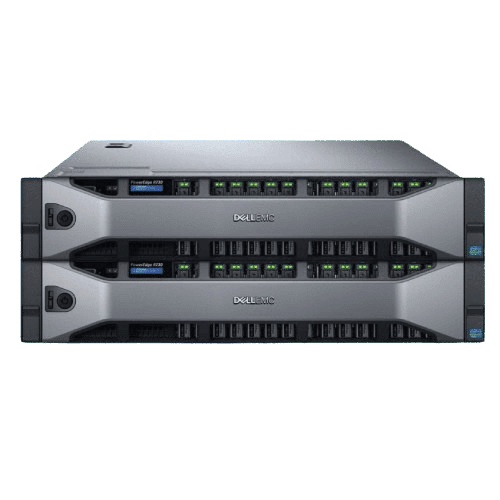Does changing server affect Seo?

Introduction :
When it comes to managing a website, the choice of web hosting server is often an overlooked factor in Search Engine Optimization (SEO). Many webmasters and site owners focus primarily on content, backlinks, keyword strategies, and design, neglecting the potential impact that the server hosting the website can have on SEO performance.
In this blog, we will explore whether changing servers can affect SEO, how it could influence your website’s performance, and what steps you should take to ensure your SEO isn’t negatively impacted when making this kind of change.
What is a Web Server and How Does It Relate to SEO?
Before diving into the relationship between server changes and SEO, it’s important to understand what a web server is and how it functions. A web server is the hardware or software that stores website files (such as HTML, images, and scripts) and delivers them to users’ browsers upon request. The server is the backbone that ensures your website is visible on the internet.
The relationship between web servers and SEO is subtle but significant. Website performance, uptime, and speed are critical factors in SEO ranking. Google and other search engines favor fast, reliable websites, and a server’s performance directly impacts these factors. If you change your server, it could have positive, negative, or neutral effects on your site’s SEO.
1. Server Location and SEO
One of the first considerations when changing servers is the geographical location of the server. The location of your server can influence SEO in several ways, particularly through site speed, latency, and local SEO rankings.
Impact on Site Speed:
Google has repeatedly stated that website speed is an important ranking factor. Server location can affect the time it takes for data to travel between the user and the server. If your target audience is located in a specific region, it’s essential to choose a server closer to that region. If your current server is based in the U.S. but most of your users are in Europe, there could be noticeable delays in loading times, negatively impacting the user experience and your SEO rankings.
Impact on Latency:
Latency refers to the time it takes for data to travel from the server to the user’s browser. A server located far from the user will have higher latency, resulting in slower load times. With search engines prioritizing faster websites, a move to a more geographically strategic location could improve your SEO.
Impact on Local SEO:
Search engines like Google give preference to local content for location-based searches. For example, a business targeting users in London is more likely to rank well if the website is hosted on a server located in or near the UK. If you change servers to a location that is more relevant to your target market, it could give your local SEO a boost.
2. Server Speed and SEO
One of the most important elements of SEO today is site speed. Google has made it clear that fast-loading websites rank higher in search engine results pages (SERPs). The speed at which your server delivers content to users impacts their experience on your site, and it also affects how search engines index and rank your website.
How Does Server Speed Affect SEO?
The time it takes for a web server to respond to a user’s request (known as server response time) can significantly impact page load times. Slow server response times can cause delays in rendering content, leading to frustrated visitors who may abandon your site.
Search engines also use page load speed as a ranking factor. Websites with slow load times are penalized in search engine rankings. Therefore, if you change to a faster server, you may experience an improvement in your SEO performance due to better server response times.
3. Uptime and Reliability of Your Server
Another key aspect of a server’s performance is uptime—the amount of time your server remains online without crashing or experiencing technical issues. Consistent server uptime is critical to both user experience and SEO.
Impact of Downtime on SEO:
Frequent or prolonged downtime can harm your SEO efforts. If search engines try to crawl your website but cannot access it due to server issues, they may penalize your site or remove it from the index temporarily. Websites that are consistently down can also experience higher bounce rates, which signals to Google that your website provides a poor user experience.
When changing servers, it’s important to ensure that your new host has a strong uptime track record. Choose a reliable server provider with an uptime guarantee of at least 99.9% to minimize the risk of negatively impacting your SEO.
4. Changing to a Faster Server
If you decide to change servers to one with faster hardware, optimized configurations, or a more efficient network, this can positively affect SEO. A faster server typically means quicker page loading times, which directly improves user experience and website ranking.
In fact, Google’s Core Web Vitals update places a strong emphasis on user experience metrics, including page loading speed, interactivity, and visual stability. All these factors depend on server performance.
Changing servers can also improve the performance of dynamic content generation. For websites that rely on databases for content, such as e-commerce sites, moving to a server that can handle higher traffic loads and perform faster queries can improve both site speed and overall performance.
5. HTTPS and SSL Certificates
Another aspect to consider when changing servers is the security protocol used by your website. Google has confirmed that SSL certificates and the use of HTTPS are ranking factors. If your new server offers SSL certificates or allows you to implement HTTPS, this could have a positive impact on your SEO.
Impact on SEO with HTTPS:
Search engines like Google now prioritize HTTPS websites over HTTP websites. If your old server doesn’t support SSL, changing to one that does could boost your SEO by improving your site’s security and trustworthiness. SSL certificates help ensure that your visitors’ data is encrypted and protected, which also enhances user trust.
6. Server-Side Issues: Redirects and DNS Configuration
Changing servers involves various technical aspects such as DNS configurations, IP address changes, and URL redirects. If these elements are not handled properly, they could affect your SEO.
DNS Configuration:
When changing servers, it’s crucial to update your Domain Name System (DNS) settings to point to the new server. If the DNS is not updated properly, users may be directed to an outdated or wrong server, resulting in downtime and potential loss of traffic. Moreover, DNS propagation can take several hours, meaning your website may be inaccessible to some users or search engines temporarily.
Redirects and URL Mapping:
If your server migration involves changing URLs or paths, ensure that 301 redirects are in place. A 301 redirect permanently points old URLs to new ones, ensuring that both users and search engines are directed to the right pages without losing link equity or traffic. Failing to set up these redirects can lead to broken links, 404 errors, and a significant loss of SEO rankings.
7. Server-Side Optimizations: Caching and Compression
When changing servers, one of the factors you may want to consider is how well the server supports caching and compression technologies. These optimizations can reduce page load times, improve performance, and positively affect SEO.
Caching:
Websites that use caching store static versions of frequently accessed pages, reducing the time it takes to load the content for users. Many modern web hosting services offer caching solutions like Varnish or Memcached, which can improve server response times and reduce load times.
Compression:
Compression techniques like Gzip reduce the size of data files (such as CSS, JavaScript, and HTML) sent from the server to the browser, speeding up the page load process. When migrating to a new server, check if these optimizations are supported and properly configured.
8. Migration and SEO Risks: Avoiding Negative Impact
While the server migration itself may offer several advantages, it does carry risks. Some of these risks can negatively affect SEO if not handled correctly:
- Crawlability Issues: Search engines need to crawl your site to index it. If the migration causes temporary issues with crawling or indexing, it can delay the reindexing of your pages, potentially causing a drop in rankings.
- Broken Links: Improper redirects or URL changes can result in broken links, which can harm SEO.
- Temporary Ranking Fluctuations: After a migration, you might experience a temporary dip in rankings. Google may take some time to fully index your new server, so be prepared for short-term fluctuations.
9. SEO Benefits of Switching to a Better Server
Despite the potential risks, there are numerous benefits to migrating to a better server, especially if your current hosting solution is lacking in terms of performance, security, or speed. Some of the SEO advantages include:
- Improved Site Speed: Faster loading times lead to a better user experience, lower bounce rates, and potentially higher rankings.
- Better Uptime and Reliability: A reliable server with fewer downtimes ensures that search engines can crawl your site consistently.
- Improved Security: Secure servers with SSL certificates build trust with both users and search engines.
10. How to Migrate Your Server Without Hurting SEO
To minimize SEO risks during server migration, follow these best practices:
- Backup Your Website: Before changing servers, make sure to back up your website files and databases to avoid data loss.
- Set Up 301 Redirects: If URLs change, set up permanent 301 redirects to maintain link equity and traffic.
- Monitor Site Performance: Use tools like Google Search Console to monitor crawl errors, indexing issues
4o mini







